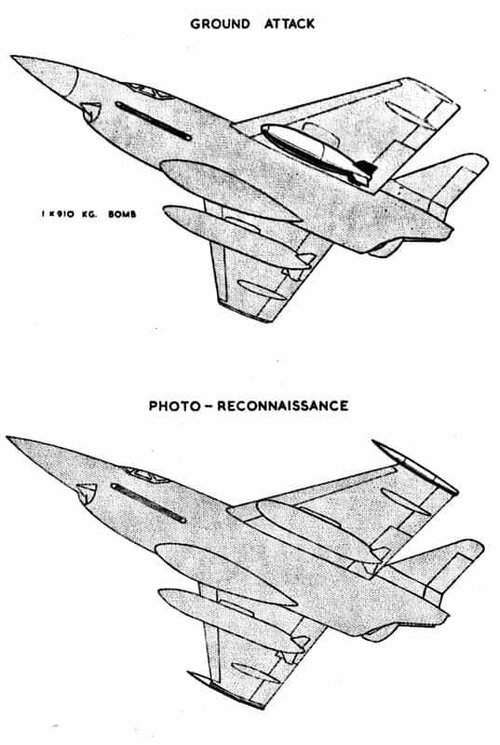Rule of cool
ACCESS: Top Secret
- Joined
- 16 January 2024
- Messages
- 1,145
- Reaction score
- 1,433
The fledgling Lufftwaffe and Marineflieger appeared to be interesting in buying British in their earliest days. Of course this was the worst possible time to deal with the British, so every effort fell over.
Wiki referencing Wood.
The German Defence Ministry first expressed interest in the SR.177 in October 1955. The prospects of a large German order for as many as 200 aircraft, and for the SR.177 to be manufactured under licence in Germany.
During 1957 OR.337 was cancelled and the prospects of an order from the RAF had evaporated, the Royal Navy and Germany remained potential customers for the SR.177.
Minister of Supply Aubrey Jones assured German officials that the SR.177 project was continuing, Sandys contacted them to inform them that the aircraft was effectively dead.
The German government decided to change its priorities from seeking an interceptor aircraft to acquiring a strike fighter instead.
Minister visited the German government in November 1957 as the Germans wanted the arrangements to be between governments instead of between their government and Saunders-Roe.
Germany chose to withdraw support from the venture in December 1957.
Thunder and Lightnings
The P.1 had survived the Defence White Paper, export prospects practically disappeared. After frustrating and fruitless attempts to sell the aircraft to the Luftwaffe, EE discovered a government representative was actually telling the Germans not to buy the aircraft!
EwenS and TinWing in the USN-Buccaneer thread
NA.39 was demonstrated to the West German Defence Minister, Franz-Josef Strauss, at the 1960 Farnborough Air Show. The Germans were shopping for a new maritime strike aircraft for the Marineflieger. The German Navy requested detailed information on the Buccaneer, but with arcane British export regulations, all such material had to be physically passed through the British embassy in Bonn, where someone forgot about it for months on end. Eventually they bought the F-104G to fulfil the role.
If 1 or 2 of these deals went through the military history of the Cold War could be vastly different.
Wiki referencing Wood.
The German Defence Ministry first expressed interest in the SR.177 in October 1955. The prospects of a large German order for as many as 200 aircraft, and for the SR.177 to be manufactured under licence in Germany.
During 1957 OR.337 was cancelled and the prospects of an order from the RAF had evaporated, the Royal Navy and Germany remained potential customers for the SR.177.
Minister of Supply Aubrey Jones assured German officials that the SR.177 project was continuing, Sandys contacted them to inform them that the aircraft was effectively dead.
The German government decided to change its priorities from seeking an interceptor aircraft to acquiring a strike fighter instead.
Minister visited the German government in November 1957 as the Germans wanted the arrangements to be between governments instead of between their government and Saunders-Roe.
Germany chose to withdraw support from the venture in December 1957.
Thunder and Lightnings
The P.1 had survived the Defence White Paper, export prospects practically disappeared. After frustrating and fruitless attempts to sell the aircraft to the Luftwaffe, EE discovered a government representative was actually telling the Germans not to buy the aircraft!
EwenS and TinWing in the USN-Buccaneer thread
NA.39 was demonstrated to the West German Defence Minister, Franz-Josef Strauss, at the 1960 Farnborough Air Show. The Germans were shopping for a new maritime strike aircraft for the Marineflieger. The German Navy requested detailed information on the Buccaneer, but with arcane British export regulations, all such material had to be physically passed through the British embassy in Bonn, where someone forgot about it for months on end. Eventually they bought the F-104G to fulfil the role.
If 1 or 2 of these deals went through the military history of the Cold War could be vastly different.

